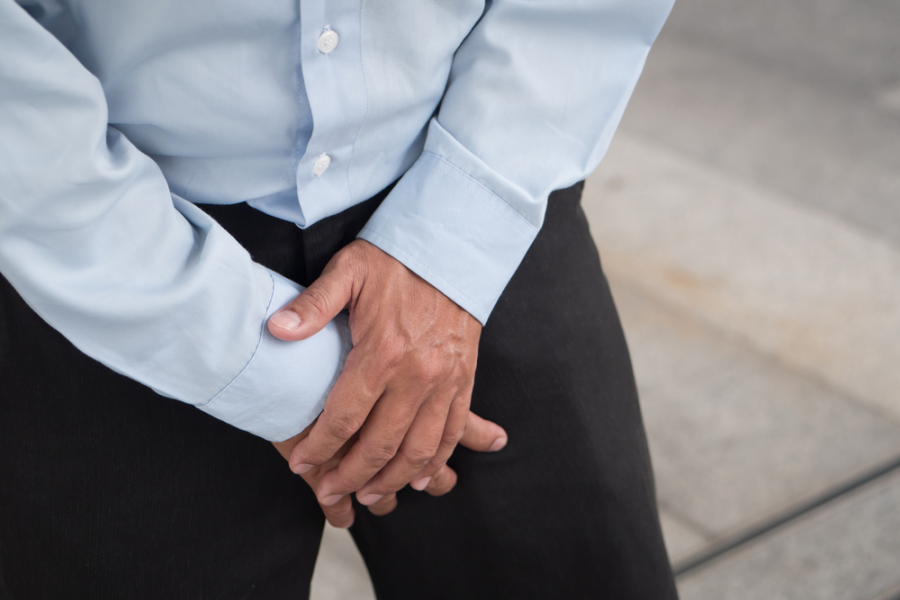The term “urinary incontinence” is the technical term for the inability to hold and pass urine in a controlled manner. The condition most often impacts the elderly, but it can also affect younger individuals as well. Unfortunately, because it can be an embarrassing condition to talk about, many of those who suffer from it might not fully understand it. Here are the five types of urinary incontinence, their common causes, and potential treatment options for affected individuals.

Stress Incontinence
As the name implies, stress incontinence results from pressure, or stress, that is exerted on the bladder. Examples of activities that induce stress incontinence include laughing, exercising, and coughing.
In particular, women who have given birth most often experience stress incontinence because pregnancy and childbirth place pressure on the bladder system. Because the cause of stress incontinence is often weakened muscles, exercises (including kegel) can alleviate the symptoms by strengthening the muscles that control the bladder for greater control.
Functional Incontinence
The second type of incontinence is functional incontinence. This type of urinary incontinence is not caused by any structural damage to the urinary system but rather because of mental or physical impairments that compromise bladder control. For example, the neurocognitive decline seen in dementia can often lead to functional incontinence. In these cases, treating the underlying condition is the optimal remedy.
Overflow Incontinence
In overflow incontinence, the bladder doesn’t fully empty during normal urination, which results in urine becoming trapped in the urethra. While the kidneys produce more urine, the excess urine trapped in the urethra is pushed out.
Men with enlarged prostate glands are particularly vulnerable to overflow incontinence. Medications to control and restore prostate function can mitigate the symptoms of overflow incontinence.
Urge Incontinence
Some individuals suffer from urge incontinence. In this variety of incontinence, characterized by sudden urges to go, the intense need to urinate comes up suddenly with very little time to make it to the bathroom. The primary cause of urinary incontinence is the misfiring of muscles that control urination due to a miscue from the brain. Urge incontinence may be caused by a neurological disorder, diabetes, or urinary tract infection.
Mixed Incontinence
Mixed incontinence is a combination of urge and stress incontinence, so that the patient feels both the intense desire to urinate and the forceful expulsion of urine. A weak pelvic floor is often the root cause of mixed incontinence.
Fortunately, modern medicine has several treatment options for each of the types of urinary incontinence that we have discussed here. Be sure to explain your symptoms fully to assist your healthcare provider in determining the correct diagnosis and, then, the right treatment modality moving forward.
